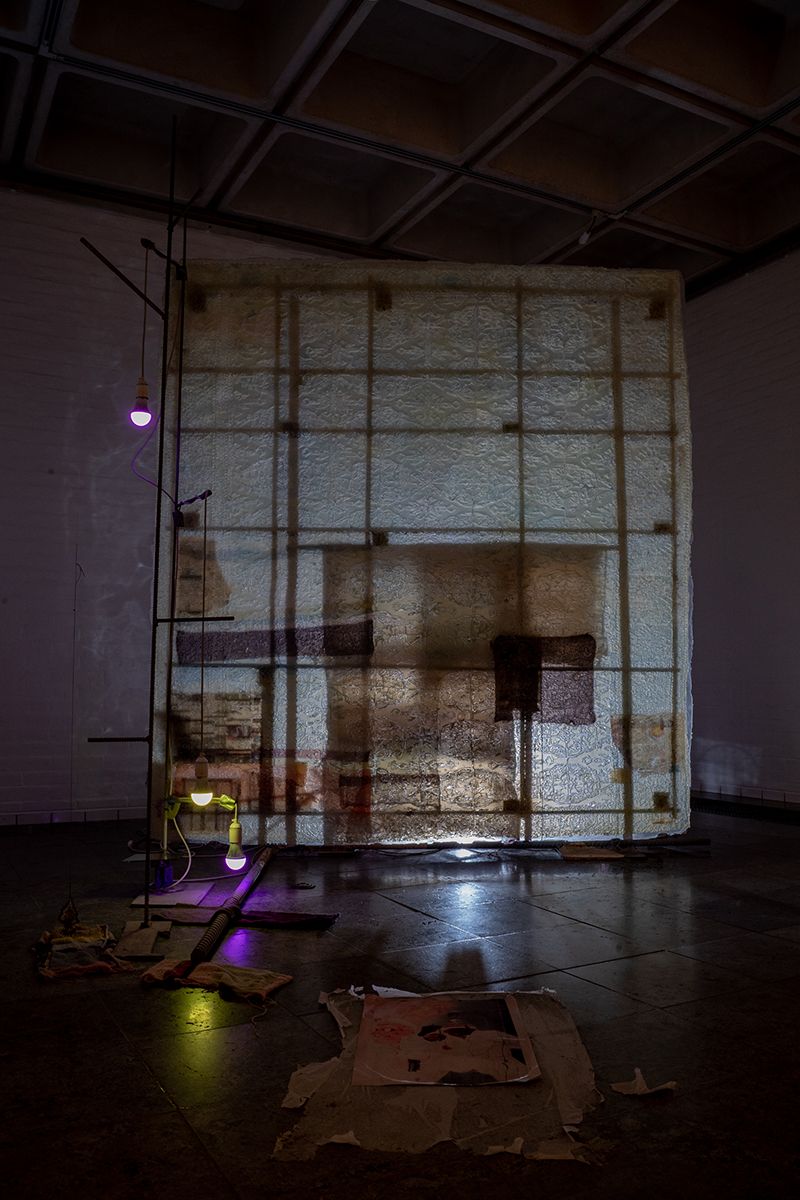Andersen, Martin Erik
As a sculptor, Martin Erik Andersen (b. 1964) is concerned with the relationship between space, body and thought.
Martin Erik Andersen works with sculptures and installations. He continually seeks to renew the traditions and does not make any sharp distinction between sculpture and installation – he integrates elements of one category into the other.
Intervening spaces
In his art Martin Erik Andersen focuses especially on the relationship between the work, the room in which the work is placed and the spectator. Also, his works often consist of many different elements and materials that would not usually be put together. This means that the works make use of surprising aesthetic codes that only few people are familiar with.
It is not the intention of Martin Erik Andersen and his art to tell stories in a common sense manner. Instead he wants to create sudden transitions in terms of materials and meanings that open up to ’intervening spaces’, in which the world is fundamentally different.
The spectator is left with the intervening spaces. In this way the work of art is not only the actual, physical work, but also the interaction – at the physical and the mental level as well – between the work and the spectator. The spectator becomes part of the work, and the work changes as he or she moves around it.
Accepting the contrariness
When trying to understand the works with everyday consciousness and language, we perceive Martin Erik Andersen’s works as strange and irrational. When accepting, however, the contrariness of the space of art and the language that prevails here, boundless possibilities and a new form of poetry open up.
Artistic education and career
Martin Erik Andersen (b. 1964) studied at the El Fonuun-Gamila Academy in Cairo (1988-89) and the Royal Danish Academy of Fine Arts in Copenhagen (1985-92), where he was also a professor for many years. Since his debut in 1988, he has exhibited extensively in Denmark and abroad, and he has carried out several major decorative commissions, including in Krystallen at the headquarters of the Nykredit bank on Kalvebod Brygge in Copenhagen, Horsens Kunstmuseum (Horsens Art Museum) and in the department of the Royal Library at the University of Copenhagen, Amager. He is represented in the collections of the National Gallery of Denmark, Horsens Kunstmuseum, ARKEN - Museum of Modern Art, KUNSTEN Museum of Modern Art Aalborg, ARoS - Aarhus Art Museum and Holstebro Kunstmuseum, which owns various works by the artist. Since 2001, Martin Erik Andersen has been a member of the artists’ association Den Frie Centre of Contemporary Art and has inter alia been awarded the three-year working scholarship of the Danish Arts Foundation, the Carl and Anne Marie Carl-Nielsen Scholarship, the Eckersberg Medal and the Thorvaldsen Medal – Denmark’s highest distinction for a visual artist.
Representation at Holstebro Kunstmuseum
Holstebro Kunstmuseum presented a number of exhibitions by Martin Erik Andersen: Each Letter Is a Complete Book (2002), Stairway to Heaven / Highway to Hell (2008) and Cultivating the Empty Field (2019). In relation to the latter, Martin Erik Andersen is the artist behind the ornamental artistic surfacing of the museums' forecourt (2019).
"Painters have a continuing obligation to preserve nuances and complexity wherever possible. Pictorial art is a standing suggestion for our common frame of reference. This suggestion implies that everything visible and everything, of which we may only be able to see the shadow and the edge, may potentially be integrated into our frame of understanding and into our continuing remodelling of the world”.
- Martin Erik Andersen



